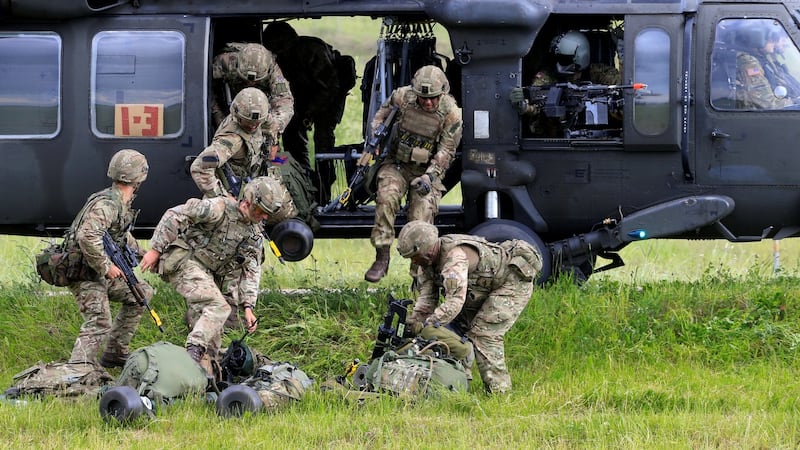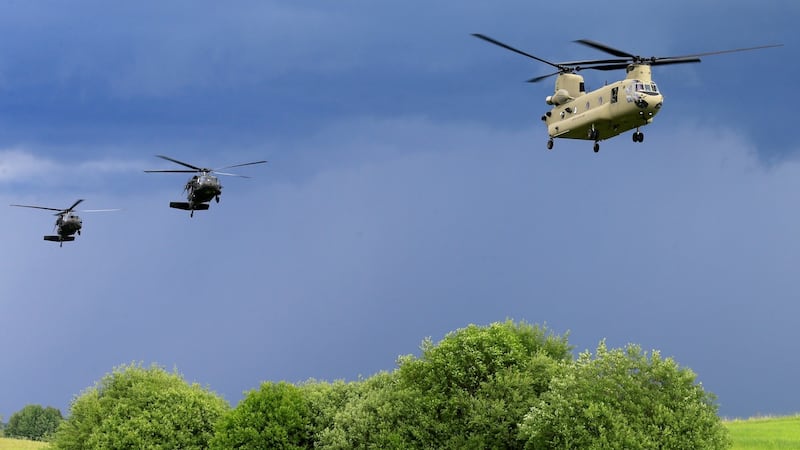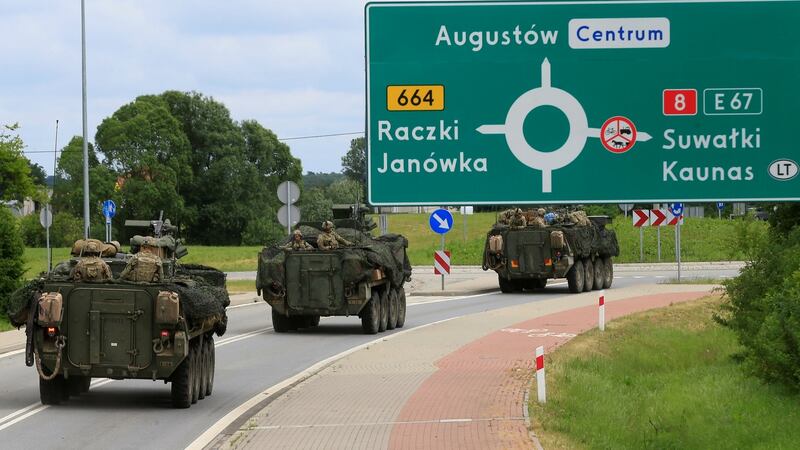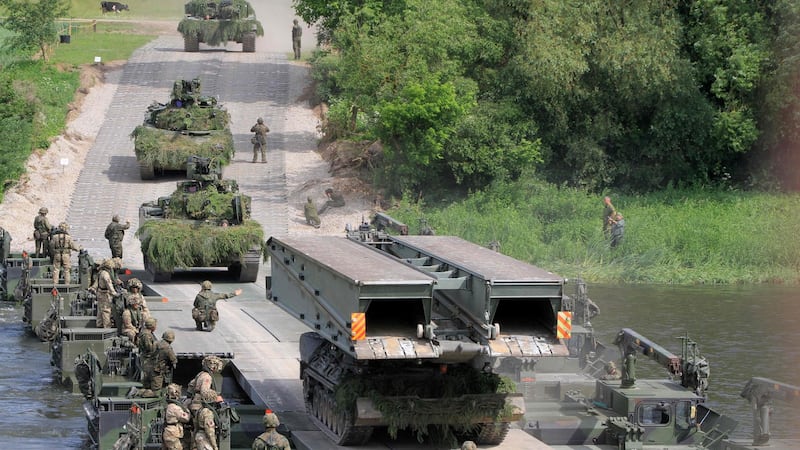A close encounter between Russian and Nato warplanes over the Baltic Sea this week highlighted rising tension in the region linked to a series of major war games.
Footage shot from a Russian government plane carrying defence minister Sergei Shoigu showed a Nato F-16 jet flying alongside, and then a Russian air force Sukhoi-27 inserting itself between the two and lifting a wing to show the western fighter that it was armed.
Nato said its jet was scrambled as part of normal procedure to identify three planes that did not identify themselves. Once that was done, the F-16 returned to base.

Russian media lauded their fighter pilot for “chasing off” the Nato jet, and after landing in Kaliningrad on the Baltic Sea, Shoigu said Moscow was being forced to respond militarily to Nato exercises and reinforcements in the region.
‘Likely to deteriorate’
“The intensity of the alliance’s operational and combat training is increasing,” he said at a meeting to discuss the security situation around Russia’s western border, which he claimed was “likely to deteriorate” due to Nato actions.

“The alliance’s Baltops 2017 and Sabre Strike 2017 large-scale exercises are currently under way near Russia’s borders. Taking part are more than 10,000 servicemen, more than 70 warships and auxiliary vessels and about 70 aircraft, including B-52 strategic bombers,” he added.
"These events blatantly demonstrate our western partners' clear reluctance to break from their anti-Russian course," Shoigu said, announcing that Russia would form 20 new military units in western regions this year.
That would increase the Russian military's already massive numerical advantage near the Baltic, and add fuel to the security fears of nearby Nato states that have seen the Kremlin send troops into Georgia in 2008 and Ukraine in 2014.
Multinational battalions
In response to Russia's annexation of Crimea and leading role in a continuing conflict in eastern Ukraine, Nato is deploying 1,000-strong multinational battalions and armour to Estonia, Latvia, Lithuania and Poland.

Alongside the kind of exercises that are now under way, the reinforcements have helped to reassure the Baltic states that Nato is committed to defending all of its members against any aggression.
But amid regular encounters between Nato and Russian aircraft and warships in the skies and seas of the Baltic, concern persists over the Kremlin’s intentions, particularly ahead of the “Zapad” (West) war games that are scheduled for September.
Nato officials think those exercises could involve 100,000 Russian soldiers, operating in western Russia, Kaliningrad – which is wedged between Poland and Lithuania – and neighbouring Belarus.
"When [Russia] went into Crimea, that was against the backdrop of an exercise. When they went into Georgia – that was an exercise," Ben Hodges, commander of US forces in Europe, said this month.
Particularly vulnerable
As part of the Sabre Strike exercise, Nato troops last weekend practised defending the so-called Suwalki Gap, a 104km stretch of the Poland-Lithuania border that is seen as particularly vulnerable – if it were captured, the Baltic states to the north would be cut off by land from Nato allies and reinforcements.
“We have to practice, we have to demonstrate that we can support allies in keeping [the Gap] open, in maintaining that connection,” Lt Gen Hodges said.
Security analysts believe an attack on the Suwalki Gap could be a component of the Zapad war games, as could the use of Russian missile forces in Kaliningrad, where nuclear-capable Iskander rockets are stationed.

"It is important to understand that the scenario of the exercise is of a military operation targeting Nato. So we should follow very carefully what they are preparing or rehearsing for," said Estonian foreign minister Sven Mikser.
“Zapad is something to keep an eye on...The Russians have previously used large-scale military exercises for cover for doing something more sinister.”
If Russian troops stay, that would change the strategic equilibrium and then we would have to go back to Nato and discuss what to do about it
Across the Baltic states - which regained independence from the Kremlin in 1991 after five decades of Soviet occupation - there are particular worries over whether Russian troops will actually leave Belarus once Zapad is officially over.
"The biggest concern currently is Belarus," said Latvian foreign minister Edgars Rinkevics.
Strategic equilibrium
“If Russian troops stay, that would change the strategic equilibrium and then we would have to go back to Nato and discuss what to do about it. From this point of view, it will be a litmus test.”
In interviews with The Irish Times, Mikser and Rinkevics said they did not fear a direct Russian attack during Zapad but would be monitoring developments very closely.
“It is important that we and our Nato allies have a heightened sense of awareness,” Mikser said, “and keep our eyes very wide open during the exercise.”











